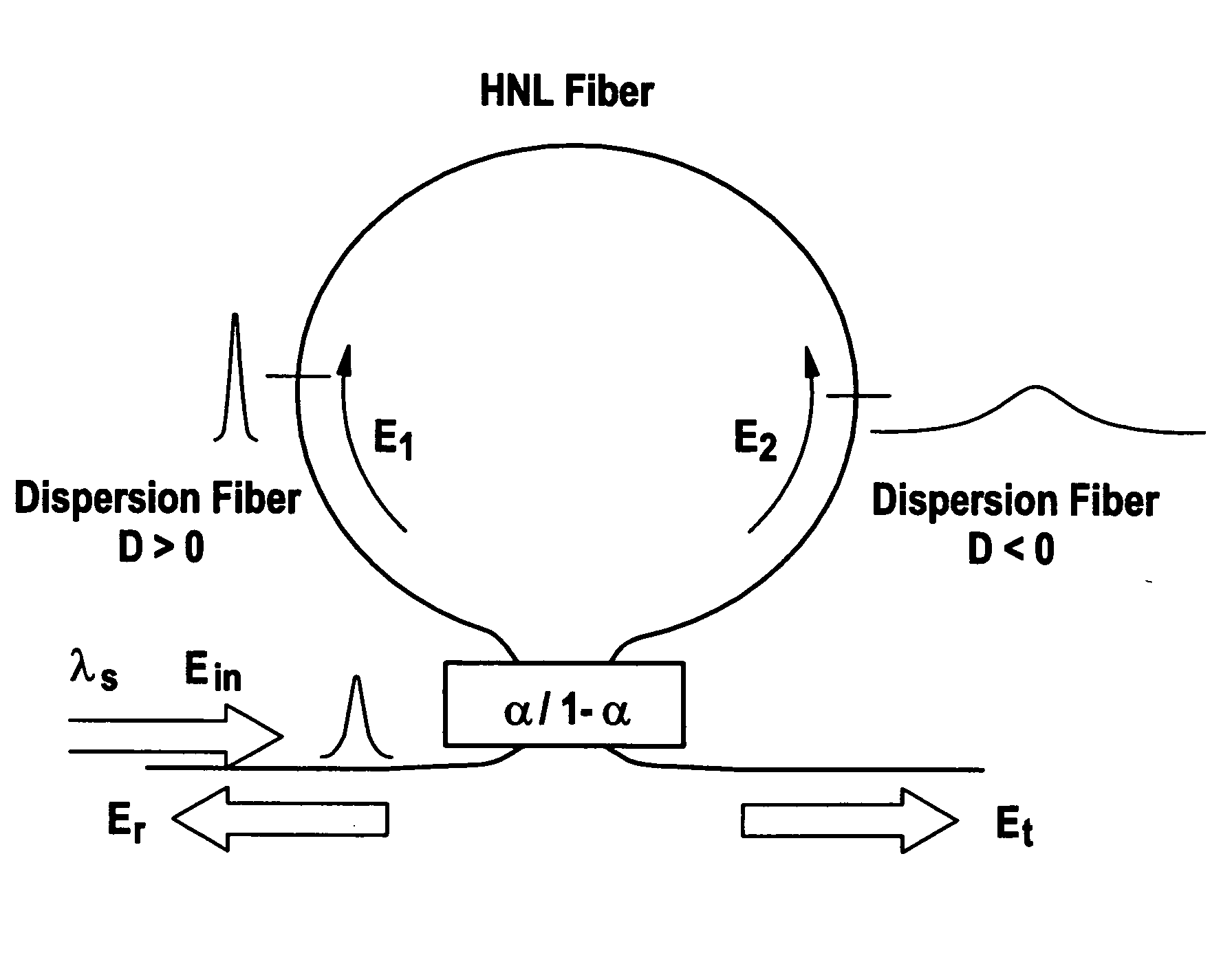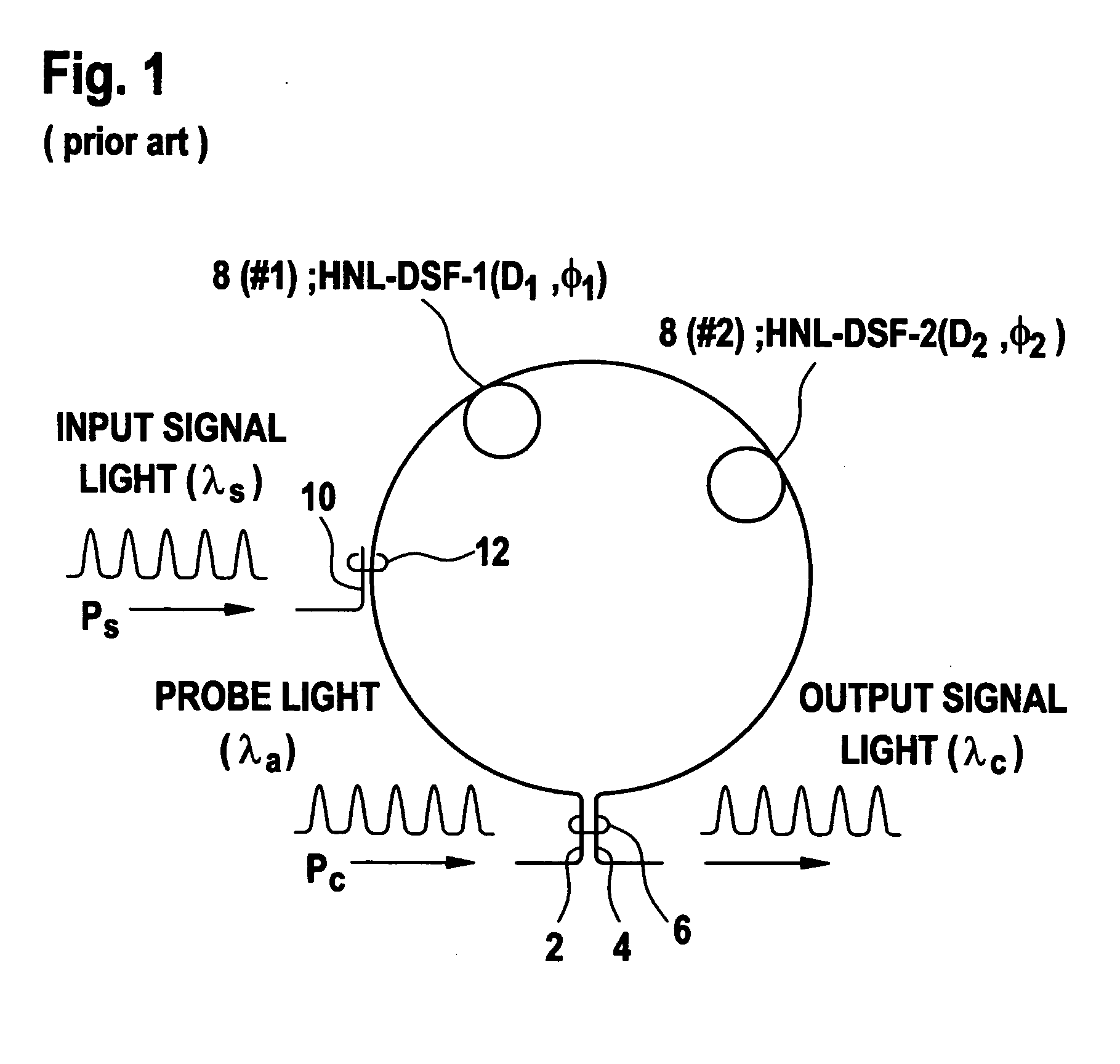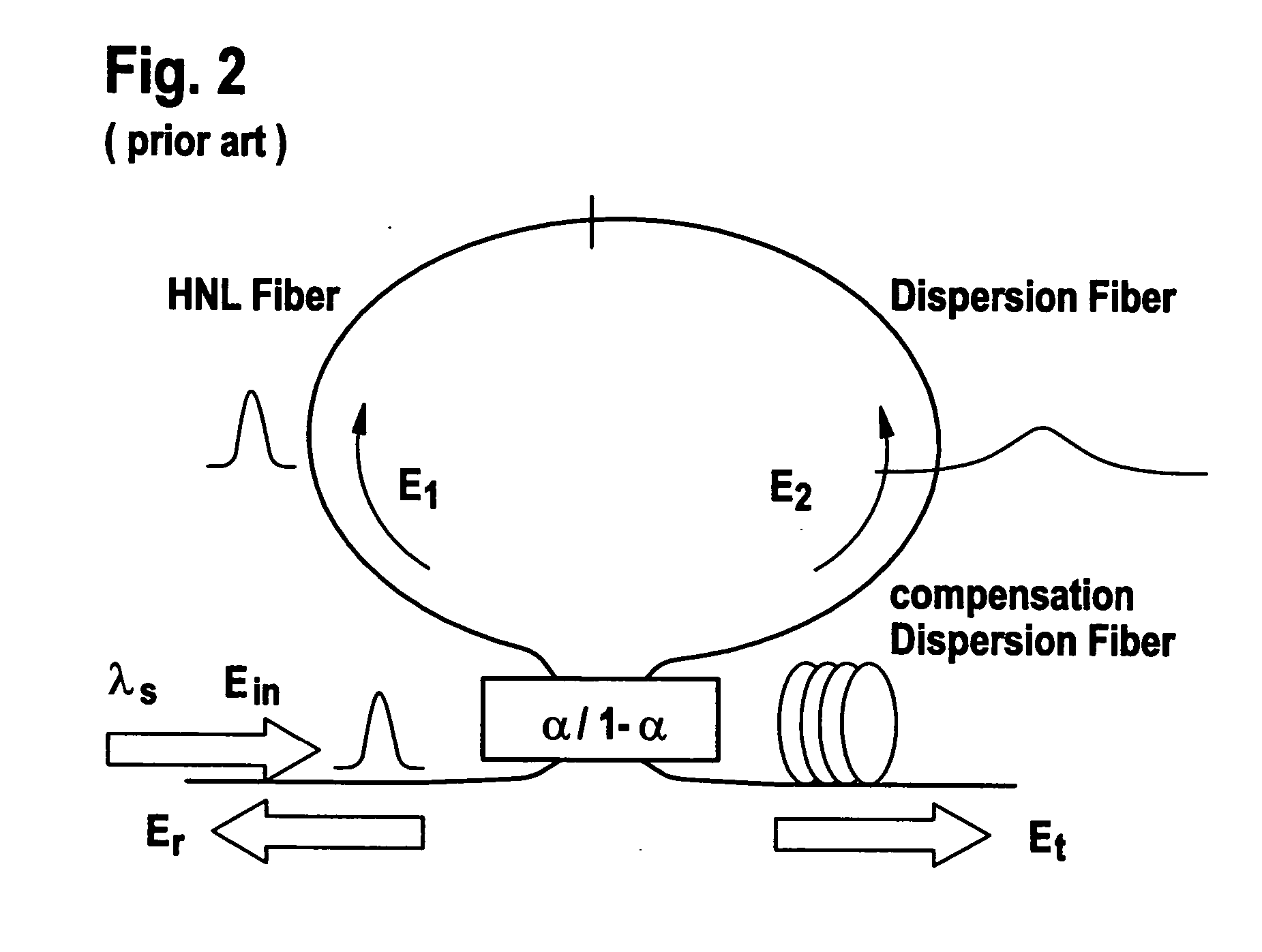Optical regenerator for high bit rate return-to-zero transmission
a technology of optical regenerators and transmission lines, applied in optics, electrical appliances, instruments, etc., can solve the problems of limiting the transmission distance, reducing the efficiency of the system, and reducing the cost of the system, so as to achieve significant improvement of the system performance and reduce the effect of long distan
- Summary
- Abstract
- Description
- Claims
- Application Information
AI Technical Summary
Benefits of technology
Problems solved by technology
Method used
Image
Examples
Embodiment Construction
[0023] On FIG. 3 is shown a dispersion imbalanced nonlinear optical loop mirror according to the invention. It comprises a coupler 23 to which are connected an input path 22 and an output path 24 for optical signal. The coupler 23 is chosen such that α=0.5 so that half of the input optical signal will be transmitted on each first and second optical paths connected to that coupler 23 and forming the optical loop path of the DI-NOLM. The optical loop path is made according to the invention of the first 30 and second 32 optical path including a first and a second fibers having different properties as to transmitted optical signals. These first and second fibers show large effective areas with local dispersion of opposite sign. Therefore the optical field E1 launched into the first optical path 30 with i.e. a positive dispersion will be subjected to a sharpening of the pulse. In contrary the other optical field E2 which is launched into the second optical path 32 with negative dispersio...
PUM
 Login to View More
Login to View More Abstract
Description
Claims
Application Information
 Login to View More
Login to View More - R&D
- Intellectual Property
- Life Sciences
- Materials
- Tech Scout
- Unparalleled Data Quality
- Higher Quality Content
- 60% Fewer Hallucinations
Browse by: Latest US Patents, China's latest patents, Technical Efficacy Thesaurus, Application Domain, Technology Topic, Popular Technical Reports.
© 2025 PatSnap. All rights reserved.Legal|Privacy policy|Modern Slavery Act Transparency Statement|Sitemap|About US| Contact US: help@patsnap.com



